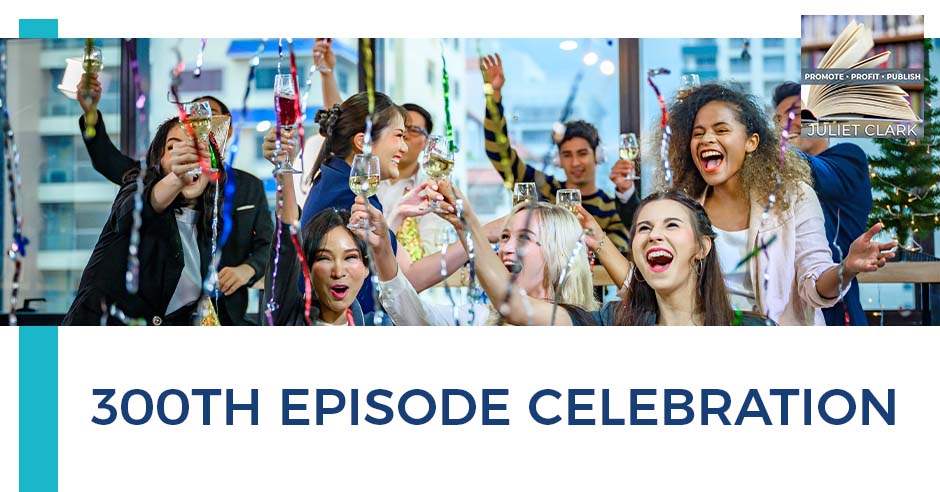
Celebrate a remarkable milestone with our 300th episode. Juliet Clark sits down with none other than Tom Hazzard and Tracy Hazzard from Podetize to take you behind the scenes of the company that made it happen. Gain exclusive insights into Tom and Tracy’s pivotal roles, exploring recent shifts in their responsibilities that have shaped the podcast company’s trajectory. Discover the triumphs of their AI-driven systems along with cutting-edge features that help target potential listeners on mobile apps. They then candidly address the challenges of AI-generated content, emphasizing the delicate balance between innovation and preserving originality. Join us in demystifying the misconceptions surrounding AI’s role in social media, where Tracy sheds light on the importance of maintaining organizational control. This episode is not just a celebration of a milestone; it’s a captivating glimpse into the future of podcasting, fueled by the cutting-edge possibilities of AI.
—
Watch the episode here
Listen to the podcast here
300th Episode Celebration With Tom And Tracy Hazzard
I am so excited to have you guys here in this episode. I would not be on my 300th episode without you. Thank you.
We are so proud of you, Juliet, a star, a student, and an elite podcaster. When you tip over 300, that is elite territory.
Titles Are Free
I know. I’m excited. I think I told you guys that my new coach pointed that out to me. I was like, “I have no idea. I jump on and record and upload it, and that’s it every week.” You two recently switched titles within your company. I know you live in the same house, and the title probably means nothing.
Titles are free. I had a boss who once said his salary is costly but titles are free. What would you like? We needed to redefine roles. I had been the CEO since we started, pretty much.
Since 2018, at least, you’ve been the CEO.
Tom was the CTO, which is the Chief Technology Officer. That served us well until the shift happened in the last year and a half for us. It started shifting in 2018 when we incorporated AI, but it shifted in the last eighteen months in which we are taking what we’ve been doing on AI in the backend and moving it to the front or the client-facing side of things. We decided that this needed a role shift. I’m the Executive Director of AI Strategy and Tom is now the CEO.
AI And Podcasting
That’s very exciting. Tell us a little bit. You guys are so far ahead of the curve on AI and podcasting. I dropped a number the other day to a fellow podcaster about how many downloads I’m getting with AI. She’s like, “Who are you with? I don’t get anywhere near that.” I felt good about and I want to shove it in her face, but that’s another story. I’m not that kind of person, but I am.
Here’s the thing. It’s not all AI. That’s the difference. If someone were doing their entire podcast and everything that they do utilizing AI, it wouldn’t work because there’s a good human detector out there in the system. They’re still detecting whether or not there’s a human. On Spotify, some crazy numbers came out like 15% of music, not even podcasts, is not generated by human beings right now. Most of that is happening in their most popular genres, which are meditation spaces and stuff like that. That says a lot that some of the platforms aren’t doing a great job of monitoring it.

AI And Podcasting: If someone were just doing their entire podcast utilizing AI, it wouldn’t work because there’s a good human detector out there in the system.
Apple changed their algorithm to make sure there’s a human being on the other side of your subscriber level. The bot level of sensitivity is still out there. Your system and what you’re doing with us that we helped you set up and start is a combination of using AI for the best things that it can do and using humans and your wonderful authority and voice and direction and perspective on your marketplace, of which you’re the only you. You’re uniquely you. That is coming across.
For those of you who are writing a book, Amazon now asks when I upload the Kindles, “Is this AI-generated or does a person write it?” I’m sure they’ve gotten a lot of bad AI books. You and I saw one that was awful.
I’ve seen some bad human books, let alone AI ones, but the AI ones are bad. What a shame that Amazon is asking you to tell them instead of knowing. They should know already.
DIY Podcast Hosting Platform
What’s crazy about it is I’ll go back and ask my author and they’ll say, “I used a little on this one section.” Most of the time, they’ll say, “I went back and rewrote it because it didn’t sound like me.” It’s a way to start. Tom, as the new CEO of the company, what are you doing in the podcast? What are you guys doing differently than most of the people out there and most of the other podcast platforms?
That’s a great question. Our big focus this year is raising awareness of a brand-new portion of our SaaS service. Our do-it-yourself podcast hosting platform advertises your show to new potential listeners. No other hosting platform has ever done that. We have been working for years on a way to do that to help our podcasters get more listeners. Right now, otherwise, it’s up to them. It’s all on the podcast host to share it on social media and raise awareness.
If you have guests, you try to incentivize those guests to share your show with their followers on social. There’s only so much reach you have or your guest has. How do we raise awareness for your show with new people? We found a way to advertise that on mobile phone apps, and it’s working to generate meaningful traffic to the podcast from people who didn’t know about your show yet.
Are you guys doing that through ads on other people’s shows? Is that the understanding I have from it?
There are a few different things we’re doing. The first one and the most exciting one, honestly, is that we are putting ads of clips from the podcast show, along with the visual and image for the identity of that show in mobile phone apps. These are free mobile phone apps that people are using every day. To use the app, they have to watch an ad once in a while. It plays a clip from your podcast. When people click, it takes them to wherever the podcaster wants them to go. Usually, that’s their podcast website. If you’re a podcaster that doesn’t have your own website, it can send them to your show on Apple or Spotify or whatever app you want them to. The whole idea is we send them where they can listen to an entire episode, try out more of it, and then subscribe, of course.
Back probably 6 or 9 months ago, I was listening to a show where I heard a full ad. I don’t think it’s what you guys were doing, but a paid ad for another show on there. It was a show on national security. I was like, “Why would I want that? Why would you want to listen to that?” This sounds like it’s a little different than that.
It is different than that. It takes putting tens of thousands of ads every month for each show in these mobile apps to generate enough clicks to be meaningful. A typical show is getting about 400 to 500 clicks every month of new potential listeners to their show. Month over month, we’re seeing an increase in listenership, which is the whole point. There are other things we’re also doing with this program to advertise your show on other podcasts that might have similar audiences that come along with this paid advertising program.
You got a couple of other different benefits for free, where we certainly are tapping into opportunities to advertise shows on other podcasts that have a similar audience. This advertising program pushes advertising to people who don’t know who you are and haven’t heard of your show to raise awareness of it. That’s what this program is designed to do. How do people get found by new potential listeners who don’t know them? This is now a significant way we’re doing that.
The number one thing we found was that so many people need new listeners. For every podcast host, this is the number one problem. They need new listeners or people who don’t know them yet. When you try advertising on social media, the media types don’t match. When you try advertising on video and podcasts, audiences are not necessarily the same thing. Where can you get someone who’s using their phone every day likely to use an audio app as well? All of those things are something that might be occurring. That’s why it’s a little bit more synergistic in modality type. That’s why it’s working right now. That’s what we’re seeing.
So many podcasters need new listeners. Share on XOur goal is to use our AI systems and the way that we do it to tighten it up. On the receiving end right now, the apps don’t allow that. They don’t allow us to dial in. We can tell them that this show would be perfect if it was a book directory app or any reading rating list. It’s interesting that they can’t accept that right now, but we’re working towards that.
Misconceptions About AI
Tracy, I think there’s a big misconception about AI that I’m going to use it to do my social media, but people don’t understand that you’re training it in the process. Can you explain a little bit about that? I think that is a big misconception for marketing people. They’re like, “I could do my social media posts.” Is it doing you?
It’s not, for the most part. Most AIs, if you’re going into a separate system and you’re typing in, “Generate me a social media post for LinkedIn using this data,” it’s going to do that in isolation. Unless you are organizing your AI chats in a logical way where you’re continually using it in the same category under the same thing and you want it to learn from the previous, unless you’re actively doing that, most of the AI systems you use wipes away what it learned before. It doesn’t continue going forward with it. It’s responding to this new request in isolation.
The other issue is a lot of AI podcasting platforms out there that you can try are like, “We’ll generate descriptions for your show and everything.” It has no ability to because they’re so afraid to violate your copyright that they store no information on you. When you put in your episode and then it gives you back your description, it deletes everything. It doesn’t save it and moves on. There are some generalized learnings that are happening across everybody’s show, but your show isn’t everybody’s show. What happens is that all the titling and all the descriptions start to get homogenized and everyone sounds the same. I know this well enough. I can go out there and go, “This person is using this AI and this person is using that AI.”
I know which ones are using it because everybody’s show description sounds the same. You don’t have any clue of that because you’re doing it in isolation, and you think you’re getting something that saved you a ton of time, and it did, but you’re sacrificing your originality in that. To maintain originality, you have to learn how to organize and speak to the AI and keep control of it in a very specific way. That’s exactly what we’re building. That’s the purpose of it. If you use a platform where it’s in the process flow, there’s a chance you may also get that original model.
I think one of the examples you mentioned when I was taking your class was it’ll say “In this podcast” or “on this podcast” every single time. As I was using Chat GPT, I noticed it would say, “On this podcast.” I’d be like, “No, I need to wipe that part out and rewrite it.” A lot of times, I will use it to write an idea, and then I’ll go back in and rewrite it, just giving me that initial “I don’t know how to organize this.” It organizes it for me, and then I go in and rewrite it if that makes sense.
Part of it is our prompts. We develop a prompt for it because we’re doing it over in Chat GPT or over in Google Bard, and we’re doing it in a separate system that’s not in flow with our podcasts already, or writing articles or descriptions for Amazon. We tend to tell it what we want it for. Because we tell it what we want it for, it’s going to spit out that information. Because we say, “I’m asking for a podcast description,” it’s going to say in this podcast.
Think about English 101. What did our teachers tell us way back when we were kids? When you’re writing a description, you say, “In this book, I learned this.” It’s doing overly proper English things that maybe don’t sound like us. It isn’t the way that we want to have a conversation with our audience, especially the ones who know that they’re already in a podcast app. It doesn’t put it in context for us.
We keep providing that. In providing that, we’re making it say stuff like that. If you delete that or if you don’t say that it’s for that, you say, “It’s for this audience. It’s a description for this audience,” so that they will click and, read, listen, and do. You’re giving them action that it’s taking, but not saying it’s a podcast episode description that you’re creating. Don’t tell it what it’s creating. That sounds counterintuitive, but that’s what you do.
It does. I always want to go in. I give it the tone because I have a sassy, smart-alecky tone. I tell it every single time. I see what you’re saying about the learning and the muddling of it because I remember going in and showing Kevin Jones saying, “Tell me about Kevin Jones’s book.” I went in and said, “Tell me about my podcast.” It was very funny. It mixed Kevin and me together, first of all. Second of all, Kevin is a cold liberal and I’m a little bit independent to conservative. It had great things to say about him and not-so-great things to say about me. I think it was a little biased too.
It’s mixing things together and it wants to please you. This is the thing. It wants to make you happy. If it thinks that’s what you’re going to respond to because of what it learned about you, then it will give you more of that, and it will give you the polar opposite when you try to do the opposite of it. It thinks that you want the negative. It’s purposely giving you what it believes you want. That’s why we have to keep things separated, and most of the AI tools do not. They merge everything together. Most of us are too lazy to create separate individual chats on everything because you have to give it new information and give it more stuff, the same times, and the same stuff again. It’s more work. That’s why it’s not always working for us.
I always give it new stuff. It sounds like it’s trying to please us. Ladies, maybe if you’re single, we can develop an AI-pleaser man in there as well.
I read that the new apps that are in the chat GPT store, over 60% of them have something to do with relationships. I think it’s being done out there. If you would like a chatbot to help you find a relationship or be your relationship, I think it already exists.
Isn’t there a whole movie about it being your relationship?
I don’t recommend it.
AI Content Generation
There you go. Tom, tell us a little bit more about how you guys are implementing the AI besides advertising because you have upcoming things that are incredible.
What we’re doing with AI is creating more services built into our platform for DIY customers to auto-title episodes, create descriptions, and generate transcripts for them.
Images in the future.
Images are coming. That’s a lot more complicated, but there was something beyond the descriptions and social posts. These are things that people would have to do themselves, or they’re maybe going out and using Chat GPT or something like that for generating them on their own, but they’re still having to do all the work. Our purpose is to automate that. You upload your audio and then it generates it all for you. That’s where we’re going. We’re not completely there now, but we’re getting there quickly.
That’s awesome. Tracy, the image part. Your mother is an artist. You did a demo of your mother’s artwork. One of our authors, Samantha Kaaua, wrote Finding Beauty in Your Broken Pieces and used Chat GPT to create the image for her cover. It wasn’t in 300 DPI, so we couldn’t use it as the actual cover. When she gave it to the graphic designer to create the cover, he said that Chat GPT used over 100 different techniques. He had a hard time recreating it. From your mother’s experience, you put your mother’s artwork in. How did that work out?
I put in the exact description that she had, like if you’ve got your painting in a gallery, you might have a description below it of what it is and the materials, so that it would mimic the type of abstract collage art that she created, and then the color base that I wanted it to. I was trying to get it to come somewhere close to hers, but I didn’t give it the image to look at. That’s how I did it at the time. I think I did that eight months ago or something. Even technology has come far away since then, so I think it’s even better now.
It came very close. What it lacked was the depth of feeling that her painting would evoke. It concentrates on perfect balance and perfect perspective, and some of those things that it learned artists are supposed to do, but real artists don’t always do. Real artists break the rules, and it’s in breaking the rules that they create an emotional connection to their art. That’s the difference. You can always tell the difference between a human-created one and a bot-created one. Sometimes, it’s harder than others to tell the difference, especially when you’re looking at it online and not in print.
Real artists break the rules and it's in breaking the rules that they create an emotional connection to their art. Share on XThe reality is that it’s come so far in the AI generation that there’s a good place for it. Here’s what we found. Over the years, we bought about 50,000 copyrighted images. You buy them from royalty-free sites since you have a license right to use them for podcasts. We’ve done this for our clients. We buy them for their blogs. We buy them for their episode art. We buy them for the cover art. Over the years, we bought 50,000 images.
On a daily basis, we and our clients are being trolled by copyright hounds who claim, “You didn’t put the copyright properly in your thing and you’re not licensed to use this image. We don’t see that you purchased this.” It makes us go through all these hoops in a big pain for us to say, “Nope, here’s the receipt for it. We do have it. We did pay for it. We owned it, and this site is authorized for it.”
We have to go through that, and it happens daily all the time to the point that the thousands of photographers and thousands of artists that we supported over buying 50,000 of those royalty-free, I’m not going to do it anymore. I’d rather AI-generate and not have to answer to these trolls that are annoying and upsetting our clients and our business. What has happened is these photographers, in trying to protect their rights, actually made it so that I will not buy stock art anymore.
We use quite a bit of stock art as well. We haven’t had that happen, but we always get the copyright trolls over our name. They claim they have our name and they don’t.
This is a pretty new practice. It’s been increasing over the last six months, but it’s gotten to the point where these artists must sign up with one of these services that does a reverse Google image search and finds every website where their images might exist. I don’t even think this company is doing any research to try to figure out if it’s properly licensed. They’re putting the onus on the website owner, sending them a demand letter saying, “You need to prove that you licensed this, or else you’re going to have to pay us $1,000, and it’s going to keep going up month after month.”
Copyright is a serious thing and I’m all for it. These are predators that are trying to not only make money on people who whether they bought it or not, if they can’t prove they bought it, they’re going to make you pay them to make them go away. That’s unfortunate. The interesting thing I also want to mention, Tracy, your experience with your mom’s art is a little different situation where you’re trying to generate something that looks like fine art. If it’s AI-generated, I don’t know if I would call it fine art, but it looks like fine art.
The reality of what we’re doing in podcasting in creating an episode image that’s unique for the episode or related to what was discussed in the episode is a very different level of image creation that’s not as heavy a lift. I think is completely appropriate for AI to do. Given now the hassles that all of these different copyright-enforcing companies are trying to do to dig for gold from all the websites that have legitimately licensed, certainly in our case, all these 50,000 images over seven years. It’s a hassle and we don’t want to deal with it. We’re going to go in a completely different direction and avoid the problem going forward because it takes a lot of time and energy on our part to respond to those claims.
This is how an industry makes the self-fulfilling prophecy of AI destroying what’s possible, by not collaborating, complaining, and trolling the people who have been supporting you for years.
Copyright Protection
I agree with that. There’s a legitimate concern for authors, artists, and musicians to be worried about their copyrights being violated. We had a young woman who came to us. She self-published her book, and it hasn’t even been released yet, and somebody has republished it. We can’t figure out how they got the material. I would imagine there’s some leakage someplace that happened with her book, and they copied it. She’s an amateur, first-time book. She didn’t have much money. She never copyrighted it. She’s been in big trouble. That’s why that copyright certificate.
She shouldn’t be because copyright is inherent in the moment that you publish, but if they did it pre-publishing, then she’s in trouble.
She might be in trouble. Also, when I file a copyright for a book, it’s in effect the minute I do it, but for them to enforce the copyright. I asked you before we got on, “Tracy, can I use something for something I’m doing that you have?” You gave me permission. With a book, if I violated and I used it and you came after me, I would have to produce that certificate to have a valid claim. She doesn’t have a valid claim at this point.
She has to have a copyright, but it doesn’t matter the date you filed. It does go back to the date that it was published because your copyright should be in there. It’s just you’re now claiming the stated right of it, and that’s an additional, but you can’t enforce anything without the stated right, without it being documented, and that’s an issue. Patents are different and other trademarks are different.
For the record here, none of us on this show are copyright attorneys, however, I have the belief from experience over the years that to assert a copyright and go into any court to try to enforce it, you’ve got to have a filed copyright. I do believe that it is possible to prove you are the original author of the work and that you created it before that other person stole it from you and published it and put it out as their own. I don’t think copyright is strictly a first-to-file situation. I think you can look back.
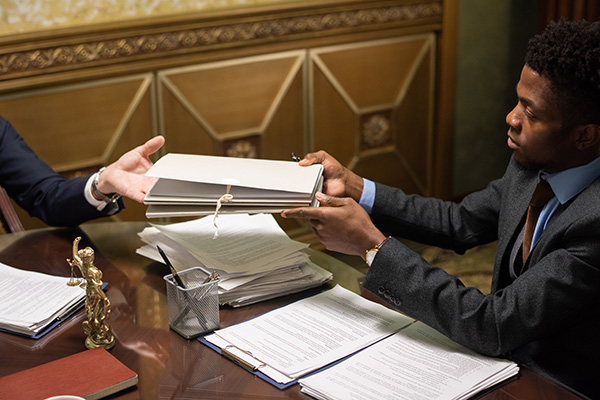
AI And Podcasting: In order to assert a copyright and go into any court to try to enforce it, you’ve got to have a filed copyright.
Here’s the thing, Juliet, that I think is happening that people don’t understand. This is my caution to your audience. If you are using any free tool to do something, let’s say you used a free tool to write your book, like there are free tools to publish a podcast. Tom and I are very against those free recording tools because, in the fine print, they have to make money to keep offering that tool to you. In the fine print, they have the right to use your content.
They might even have the right ownership of it. They might even already be licensing it to an AI, large language model. That’s how it got in because you used a free tool to assemble your book, to organize it, or one of the vendors used a free tool instead of a paid tool. It makes a big difference here in where we’re talking about somebody who didn’t purposely leak it and sell it. It probably leaked out in a way like that that you’re unaware of.
I’m going to give you an example, and Tracy is aware of this example. I used to have a product that I did, and I used someone else’s platform to build it. When Tracy and I were working together, we started noticing that she was taking our work product and using it to advertise or using it on her landing pages and using it as a model inside. She issued new terms and conditions that said anything done on her platform became her material. We stopped building that product because, technically, that was an IP theft on her part, but it was a legal IP theft since you checked yes.
Do you guys remember the South Park episode with Apple terms and conditions, and how in the terms and conditions it said that they can sew your mouth to another terms and conditions customer? They were trying to get out of it, but they were all tied to each other’s mouths or the other person’s butt. It’s probably a bad example, but that’s what comes to mind. I died laughing when I saw that because nobody ever reads them.
This is the thing. More often, it’s a free tool that is doing something like that because they have to make money to offer that thing for free. They’re using your information. They’re advertising your stuff. Whatever that might be, they are ways that they’re predominantly making money. They’re always looking at new ways to make money, so they’ll update their terms and conditions. If you didn’t read it, you don’t understand that’s what happened to your stuff, and you did agree to it. You didn’t know you were agreeing to it. I think it’s more risky for those of us who use contractors who don’t understand whether or not they’re doing that. Lots of the people on Fiverr and other things are barely making enough money, so they’re probably not licensing their software properly.
Connect With Tom And Tracy
Tom, we’re going to wrap this up. If people have been thinking about a podcast, and they found out that Tom and Tracy have a platform where they can use AI with their DIY, where do we find you and get in contact? This may be the time that they decide to do this.
If they want to self-publish a podcast, create their own show, and publish it themselves, they don’t even need to make an appointment. They go to Podetize.com and then sign up for a hosting subscription. That’s in the top menu, podcast hosting. It’s pretty straightforward. If they are looking for support to launch that show, have a lot of the laundry list of things that you need to create done for them, so all they need to focus on is recording their unique message to the world, uploading it, and being done. On the Podetize.com homepage, about two-thirds all the way down, is a booking calendar where they can book a call with me or another member of our staff to ask a few key questions, learn what kind of support they’re looking for, and then share how they can get that support.
There are a couple of options there, but our client portal is constantly being updated. Auto generation of transcripts is out now, and you can upload your MP3 file, push a button, and then you have your transcript. That’s the first step in the AI. The AI generates that, and then that’s the first step of other things that will happen as we go over the course of 2024, but it’s straightforward. The only other thing I guess I want to mention to any potential podcasters or existing podcasters out there is if you want to be found by more of your ideal listeners, reach out to us because we have this new program we talked about earlier that advertises your show. We provide a lot of support as a company to the podcasters who are working with us, including having a support phone number in the footer of every page of our website.
No other podcast hosting company has that, and we have a weekly client coaching call. Also, that’s a great community to help move all of our podcasters forward to reach their goals. Just be aware of that as you’re considering what companies to work with to bring your message to the world. I think anybody tuning in to this would probably prefer to have some support to be able to call out and ask some questions when they need it, and not just have to send an email and hope to get an answer back in a few days.
I agree, and I’m going to plug these guys. I didn’t get to 300 episodes without support. I’m a big whiner. I complain all the time. They put up with it.
That’s not true.
Most of the helpful parts are they do all that transcription, all the videos, and my YouTube channel. Tracy and I are working on a little project together. I had to ask how to get into my website. That’s how much they do for me. I didn’t know where to go, what to do, and my login. I think they did it on purpose because they knew I was a tech idiot.
For those of you on the tech side, I just retriggered it. It was hers. I can’t see it.
Props on how much they do and how much it takes off your plate and allows you to create good content without a whole lot of work on your part. You guys, thank you so much for your support. Thank you for being on this episode and sharing everything you do.
Congratulations. We are very proud of you. Thank you for being such a big supporter of us as well.
Thank you. I’ll talk to you guys soon.
Important Links
- Tom– LinkedIn
- Tracy– LinkedIn
- Finding Beauty in Your Broken Pieces
- Podetize.com
About Tom Hazzard
 As a top influence strategist for speakers, authors & experts, Tom Hazzard helps major publications, sports stars, and entrepreneurial influencers ‘Brandcast’ their original messages via podcasting and videocasting. Tom is a real inventor and successful product designer with over 40 US patents issued and pending. He has been rethinking brand innovation for 30 years. His latest SaaS (Software-as-aService) and MaaS (Marketing-as-a-Service) innovation, Podetize, reinvents podcast hosting, advertising, and brand marketing with an obsessive podcaster-centric focus on solutions to get hosts seen, heard, found, and rewarded in our noisy digital world.
As a top influence strategist for speakers, authors & experts, Tom Hazzard helps major publications, sports stars, and entrepreneurial influencers ‘Brandcast’ their original messages via podcasting and videocasting. Tom is a real inventor and successful product designer with over 40 US patents issued and pending. He has been rethinking brand innovation for 30 years. His latest SaaS (Software-as-aService) and MaaS (Marketing-as-a-Service) innovation, Podetize, reinvents podcast hosting, advertising, and brand marketing with an obsessive podcaster-centric focus on solutions to get hosts seen, heard, found, and rewarded in our noisy digital world.
Tom Hazzard co-hosts multiple top-ranked podcasts with over 2000 episodes combined: Feed Your Brand–in CIO’s Top 26 Entrepreneur Podcasts List; Product Launch Hazzards for inventors and e-Sellers; and WTFFF?! 3D Printing: the 3D Start Point, featured as an exclusive live podcast at SXSW. He starts a new podcast every year to put himself into the shoes of his clients and is just launching a review show called The Next Little Thing.
Tom has been featured in Harvard Business Review, Forbes, Wired, and CNN Money. He has also guested on numerous podcasts and speaks at conferences across the country about Podcast Marketing and Multi-Media Brandcasting. With the constant stream of content and products from his Brandcasters authority platform, Podetize.com, Tom Hazzard influences and casts branded content and $2 Billion worth of products and innovation around the world.
About Tracy Hazzard
 Tracy Hazzard is a seasoned media expert with over 2600 interviews from articles in Authority Magazine, BuzzFeed, and her Inc. Magazine column; and from her multiple top-ranked videocasts and podcasts like The Binge Factor and Feed Your Brand – one of CIO’s Top 26 Entrepreneur Podcasts. Tracy brings diverse views from what works and what doesn’t work in marketing, branding and media from thought leaders and industry icons redefining success around the globe. Tracy’s unique gift to the podcasting, marketing, and branding world is being able to identify that unique binge-able factor – the thing that makes people come back again and again, listen actively, share as raving fans, and buy everything you have to sell.
Tracy Hazzard is a seasoned media expert with over 2600 interviews from articles in Authority Magazine, BuzzFeed, and her Inc. Magazine column; and from her multiple top-ranked videocasts and podcasts like The Binge Factor and Feed Your Brand – one of CIO’s Top 26 Entrepreneur Podcasts. Tracy brings diverse views from what works and what doesn’t work in marketing, branding and media from thought leaders and industry icons redefining success around the globe. Tracy’s unique gift to the podcasting, marketing, and branding world is being able to identify that unique binge-able factor – the thing that makes people come back again and again, listen actively, share as raving fans, and buy everything you have to sell.
Love the show? Subscribe, rate, review, and share!
- superbrandpublishing.com
- Promote, Profit, Publish on YouTube
- Follow Juliet on LinkedIn
- Take the Quiz!

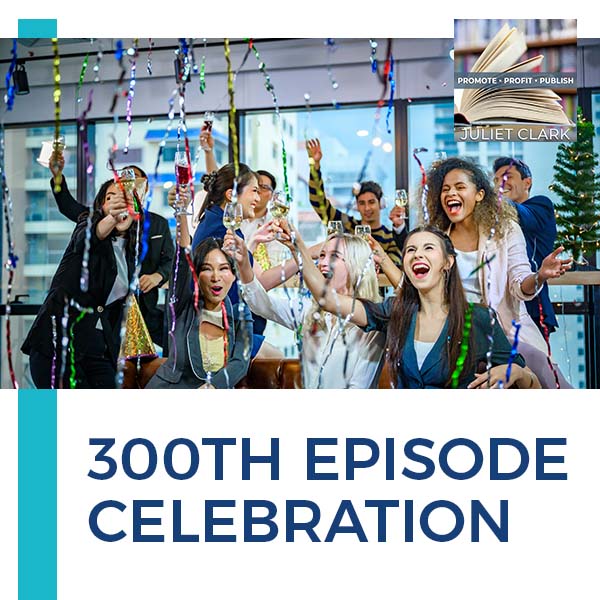


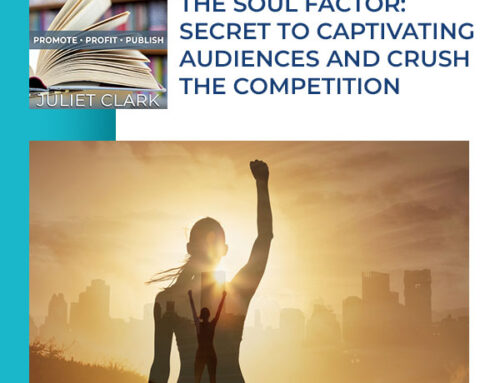
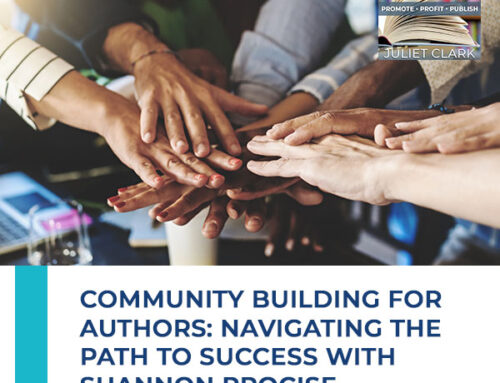
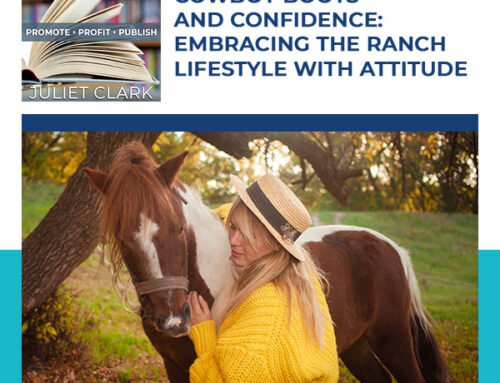


Leave A Comment